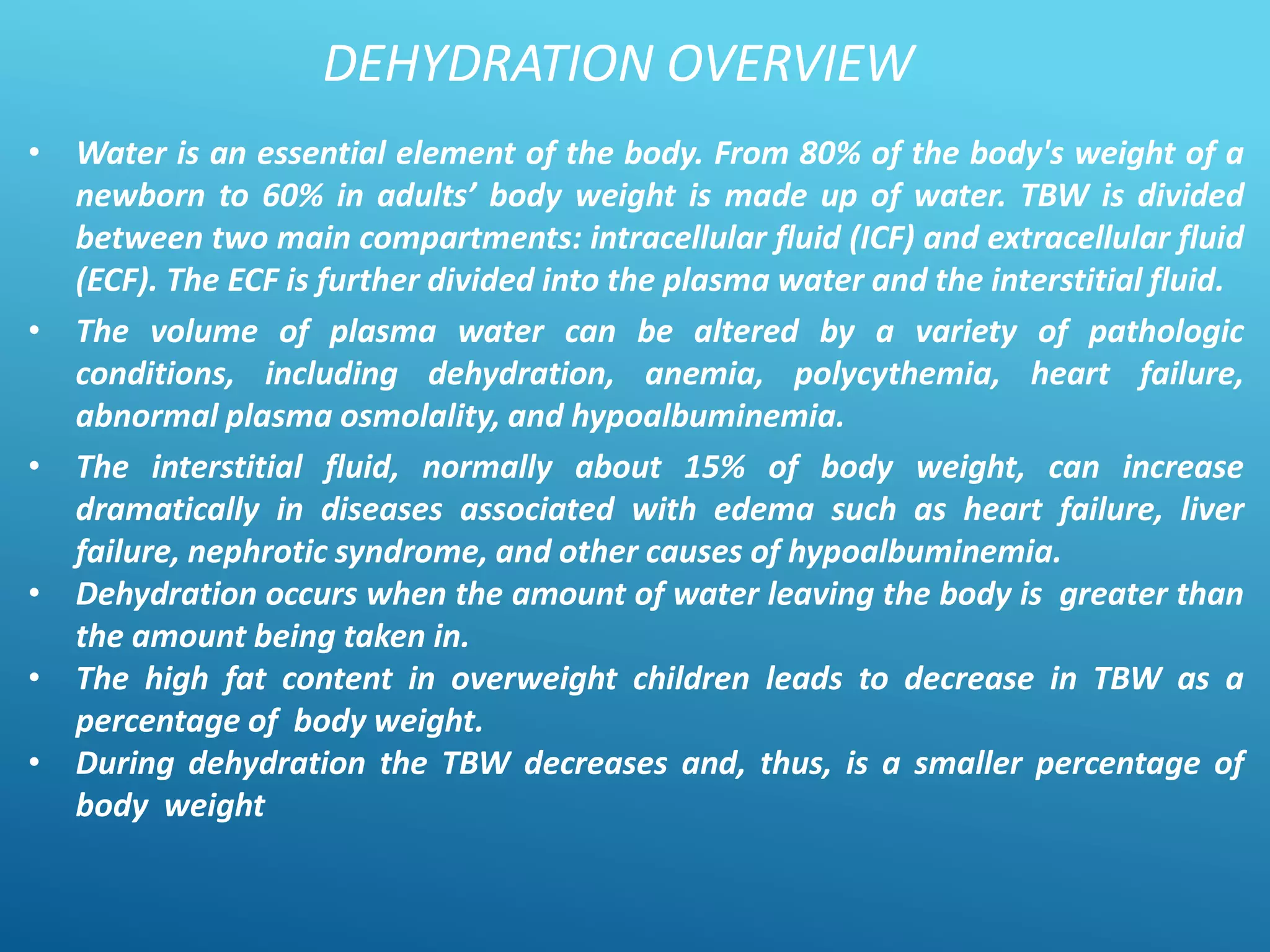Dehydration occurs when fluid loss exceeds fluid intake. It can range from mild to severe based on the percentage of fluid loss. Treatment involves oral rehydration for mild to moderate cases and IV fluids for severe cases. IV fluid regimens are calculated based on correcting existing deficits, replacing ongoing losses, and meeting daily fluid needs over 24 hours. The treatment goal is gradual rehydration to prevent complications.































